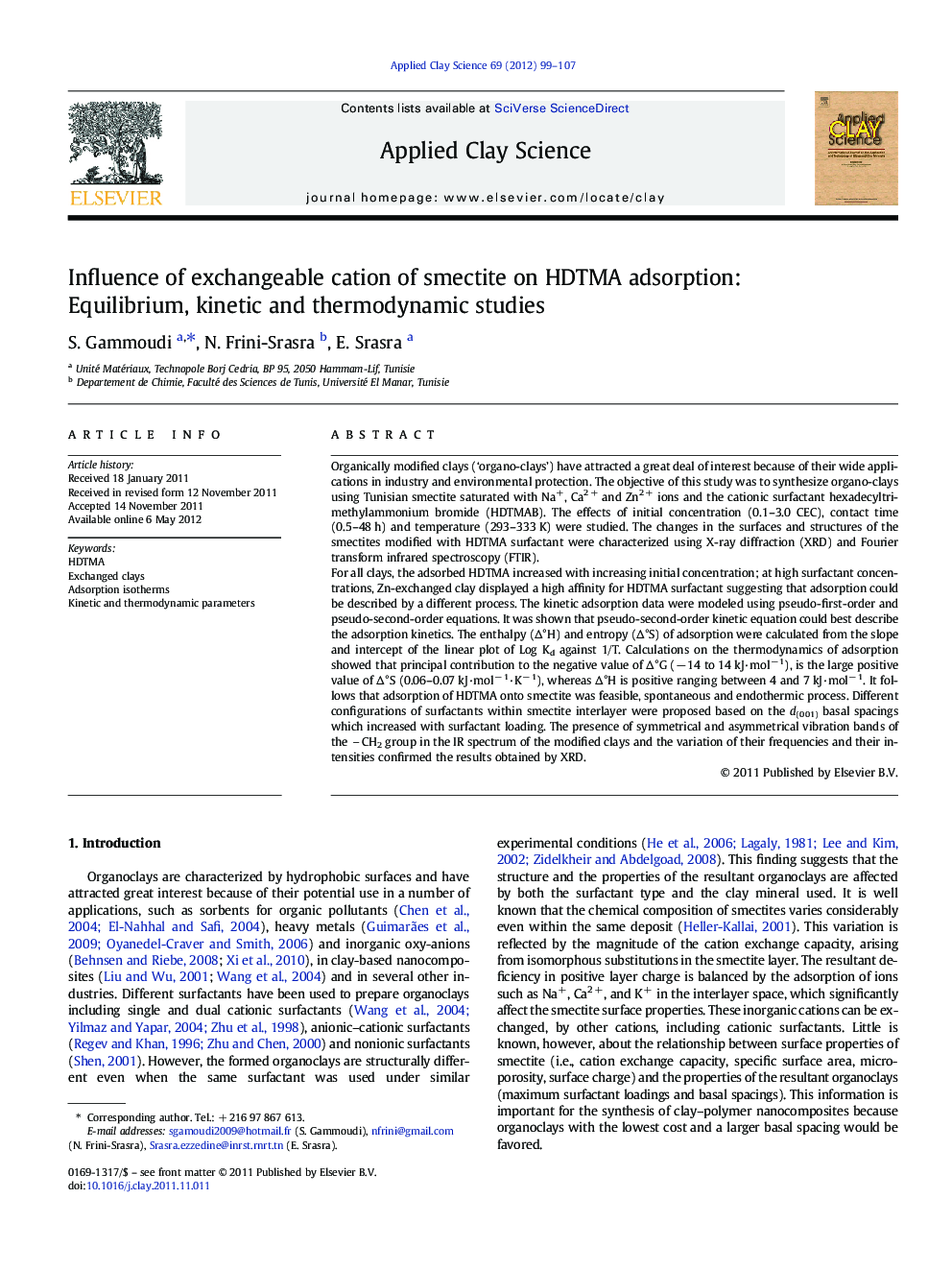| کد مقاله | کد نشریه | سال انتشار | مقاله انگلیسی | نسخه تمام متن |
|---|---|---|---|---|
| 1695167 | 1519101 | 2012 | 9 صفحه PDF | دانلود رایگان |

Organically modified clays (‘organo-clays’) have attracted a great deal of interest because of their wide applications in industry and environmental protection. The objective of this study was to synthesize organo-clays using Tunisian smectite saturated with Na+, Ca2 + and Zn2 + ions and the cationic surfactant hexadecyltrimethylammonium bromide (HDTMAB). The effects of initial concentration (0.1–3.0 CEC), contact time (0.5–48 h) and temperature (293–333 K) were studied. The changes in the surfaces and structures of the smectites modified with HDTMA surfactant were characterized using X-ray diffraction (XRD) and Fourier transform infrared spectroscopy (FTIR).For all clays, the adsorbed HDTMA increased with increasing initial concentration; at high surfactant concentrations, Zn-exchanged clay displayed a high affinity for HDTMA surfactant suggesting that adsorption could be described by a different process. The kinetic adsorption data were modeled using pseudo-first-order and pseudo-second-order equations. It was shown that pseudo-second-order kinetic equation could best describe the adsorption kinetics. The enthalpy (Δ°H) and entropy (Δ°S) of adsorption were calculated from the slope and intercept of the linear plot of Log Kd against 1/T. Calculations on the thermodynamics of adsorption showed that principal contribution to the negative value of Δ°G (− 14 to 14 kJ·mol− 1), is the large positive value of Δ°S (0.06–0.07 kJ·mol− 1·K− 1), whereas Δ°H is positive ranging between 4 and 7 kJ·mol− 1. It follows that adsorption of HDTMA onto smectite was feasible, spontaneous and endothermic process. Different configurations of surfactants within smectite interlayer were proposed based on the d(001) basal spacings which increased with surfactant loading. The presence of symmetrical and asymmetrical vibration bands of the CH2 group in the IR spectrum of the modified clays and the variation of their frequencies and their intensities confirmed the results obtained by XRD.
Graphic abstractIllustration of interlayer configuration of intercalated surfactant molecules in the interlayer space of exchanged smectite (a) Mn +-smectite (b) lateral monolayer (c) lateral bilayer and (d) paraffin monolayer arrangement and (e) paraffin bilayer arrangement.Figure optionsDownload as PowerPoint slideHighlights
► Smectite saturated with Na+, Ca2+ and Zn2+.
► Surface properties of smectite (SSA, micro-porosity, surface charge) changed.
► Intercalation of cationic surfactant HDTMA into saturated smectite.
► Properties of the organoclays modified according to nature of exchangeable cations.
Journal: Applied Clay Science - Volume 69, November 2012, Pages 99–107